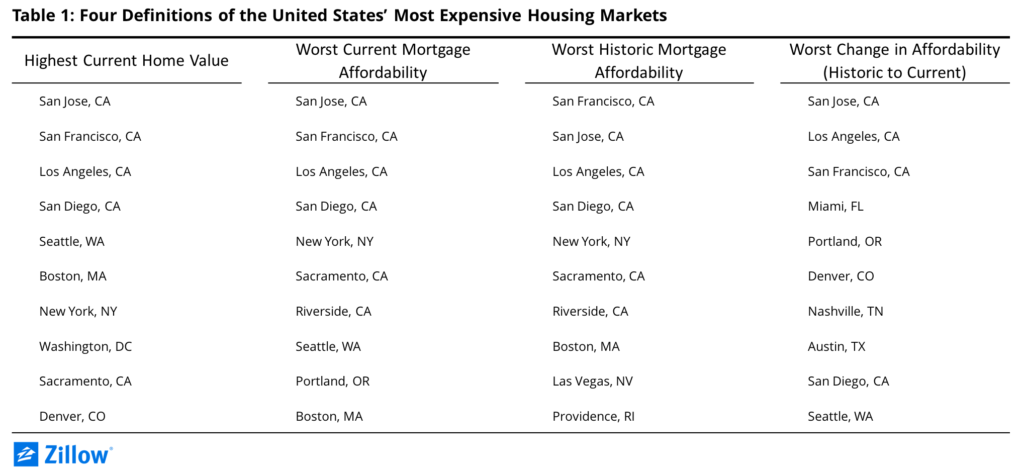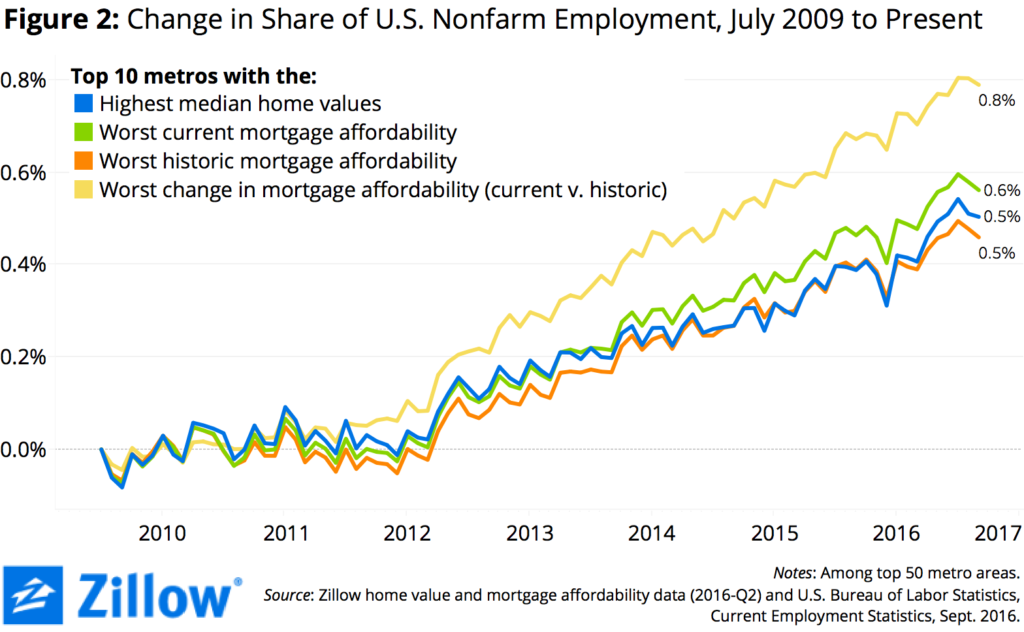It’s True: The Country’s Most Expensive Housing Markets Are Creating the Most Jobs
However you look at it, the nation’s most expensive housing markets are home to a growing share of the nation’s jobs.

However you look at it, the nation’s most expensive housing markets are home to a growing share of the nation’s jobs.

However you look at it, the nation’s most expensive housing markets are home to a growing share of the nation’s jobs.
We defined the nation’s most expensive housing markets in four different ways:
There is quite a bit of overlap between the markets that meet these different criteria. California’s four big coastal markets – San Francisco, Los Angeles, San Jose and San Diego – are on all four lists. But other metros pop on an off the top 10 lists, depending on the definition. New York, Boston, Seattle and Sacramento are each on three of the four lists (table 1).
 There is a clear upward trend in the share of total U.S., nonfarm employment located in each group of markets over the past two decades (figure 1). The share of total U.S. jobs increased in these expensive housing markets in the run-up to the early-2000s dot.com bubble and bust, then experienced a drop in their share of national employment for much of the 2000s. This turned around with the end of the recession, and expensive housing markets are again seeing a historically high share of national employment. Currently, roughly one in five U.S. jobs is located in one of the 10 metros with the highest overall home values, worst current mortgage affordability and/or worst historic mortgage affordability.
There is a clear upward trend in the share of total U.S., nonfarm employment located in each group of markets over the past two decades (figure 1). The share of total U.S. jobs increased in these expensive housing markets in the run-up to the early-2000s dot.com bubble and bust, then experienced a drop in their share of national employment for much of the 2000s. This turned around with the end of the recession, and expensive housing markets are again seeing a historically high share of national employment. Currently, roughly one in five U.S. jobs is located in one of the 10 metros with the highest overall home values, worst current mortgage affordability and/or worst historic mortgage affordability.
 Zooming in on the post-recession period, job gains have been most concentrated in the markets where housing affordability has deteriorated most (figure 2).
Zooming in on the post-recession period, job gains have been most concentrated in the markets where housing affordability has deteriorated most (figure 2).
 Whether strong job growth is the symptom or the cause of deteriorating housing affordability – are these markets less affordable because of strong job growth, or is strong job growth the result of something else making these markets expensive? – is somewhat of a chicken-and-egg question. Both explanations hold some grain of truth, and it’s naïve to entirely disentangle them. Regardless of which comes first, there is little doubt that over the past five years, America’s most expensive housing markets are taking a lion’s share of the country’s employment growth.
Whether strong job growth is the symptom or the cause of deteriorating housing affordability – are these markets less affordable because of strong job growth, or is strong job growth the result of something else making these markets expensive? – is somewhat of a chicken-and-egg question. Both explanations hold some grain of truth, and it’s naïve to entirely disentangle them. Regardless of which comes first, there is little doubt that over the past five years, America’s most expensive housing markets are taking a lion’s share of the country’s employment growth.